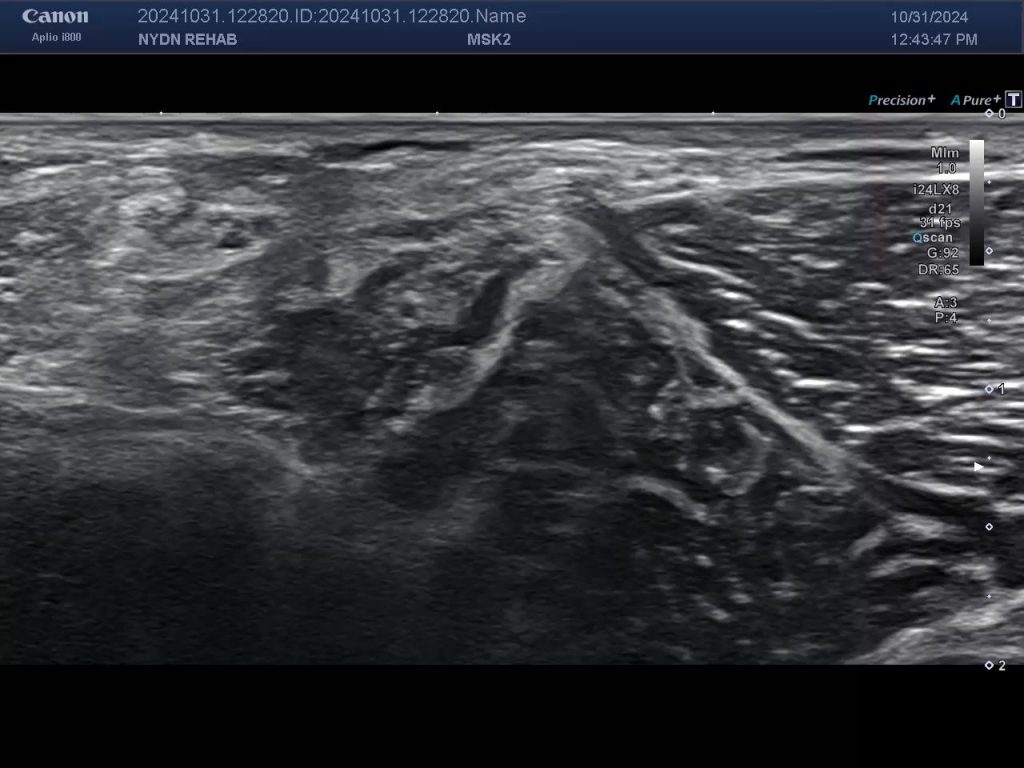Our patient is a very athletic 49 year-old female runner and triathlete who came to us for a 3D gait analysis. She complained of posterior-lateral knee pain, along with swelling at the back of her knee, medial to the locus of pain. She described the pain as going up and down during running. She denied any numbness or tingling.
The patient had seen multiple physical therapists who gave her knee strengthening exercises that did nothing to alleviate her pain. A previous MRI had revealed signs of patellofemoral dysfunction, mild chondromalacia, and a popliteal cyst on the medial knee that did not correlate with her pain.
We performed a 3D gait analysis that identified multiple kinematic abnormalities, including:
We performed a diagnostic exam using high-resolution ultrasonography, along with dynamic ultrasonography during running.
We observed normal peroneal nerve movement through the fibular tunnel, but we noticed a snapping of the peroneal nerve against the fabella, which reproduced the patient’s symptoms.
The patient was symptom-free within 3 months.

While most internal knee problems are well-visualized with MRI, the patient’s previous MRI exam did not detect the fabella, which we picked up on ultrasound. An important factor that distinguishes diagnostic ultrasound imaging from MRI is that the radiologist only examines the images, and not the patient. Moreover, ultrasound is superior for examining nerves compared to MRI. Because MRI images are static and not dynamic, they do not provide information about the dynamic interaction of various structures, in this case that of the peroneal nerve and the fabella.
Dr. Lev Kalika is a world-recognized expert in musculoskeletal medicine. with 20+ years of clinical experience in diagnostic musculoskeletal ultrasonography, rehabilitative sports medicine and conservative orthopedics. In addition to operating his clinical practice in Manhattan, he regularly publishes peer-reviewed research on ultrasound-guided therapies and procedures. He serves as a peer reviewer for Springer Nature.
Dr. Kalika is an esteemed member of multiple professional organizations, including: